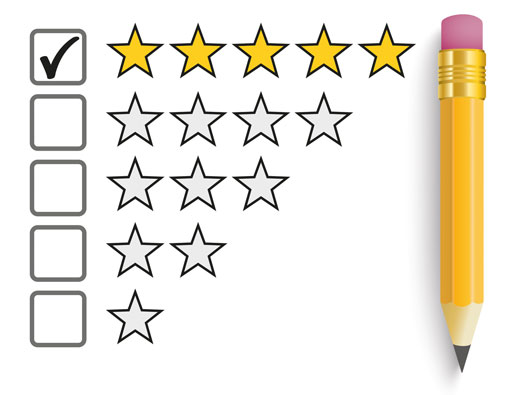Making effective use of any time agents may have between calls is a challenge. Here are some ideas to help maximise contact centre productivity.
1. Add up-selling activity to each call to fill the extra time
Encourage customer service and up-sell opportunities in quieter periods, as less focus is needed on KPIs such as Average Handling Time (AHT).
This means that agents can spend a little more time on the call, which can increase customer satisfaction and First Contact Resolution (FCR) – helping to reduce repeat calls and increase agent autonomy.
2. Managers should take the opportunity to praise agents directly
When a lull in calls is identified, management teams should take the time to interact directly with agents.
Quite often this can help morale, especially if it is positive encouragement or meaningful feedback that can emphasise personal or team goals and communicate how close they are to reaching them.
Explaining how the agent has helped to reach those goals can also help to motivate and maintain transparency within the team.
With thanks to Martyn King at Nexbridge
3. Self-assessment quality monitoring


Linda Davis
We have a quality monitoring programme with scores that are shared with our agents – with a view to them learning from the feedback.
We provide the facility for the agent to listen to these calls as and when they have downtime, so they can self-assess and understand what made the call good or what can be improved.
This activity is encouraged by the managers in agent 1:1s and coaching sessions, so we find they rarely have time to get bored!
With thanks to Linda Davis at AllClear Travel Insurance
4. Give time off at short notice
If you find yourself overstaffed because workloads are lower than forecast, think about offering time off to under-utilised agents at short notice.
Some agents find this motivational and it helps you build up a balance of extra hours for those days when you are understaffed.

Chris Dealy
5. Self-paced e-learning tools can be used between calls
Cloud-learning programmes can help to educate and increase your agents’ skills.
Dedicated e-learning tools can be integrated into classroom training, while also remaining self-paced for agents’ convenience, and can be undertaken during time that otherwise would be unproductive (such as between calls).
With thanks to Chris Dealy at injixo
6. Track where your lulls are and plan how to use them most effectively

The amount of time between calls will vary.

Phil Anderson
By tracking occupancy by interval, you will be able to identify potential intervals within the day where activities could take place.
7. Sit team leaders amongst multiple advisors for simultaneous coaching
During quiet periods, sit team leaders between multiple advisors to carry out simultaneous coaching sessions. They can also be present to offer advice during a call and instant feedback at the end.
By combining multiple advisors, team leaders should be able to work around the random arrival pattern of calls.
With thanks to Phil Anderson at The Forum

Paul Chance
8. Assist the back office by completing additional tasks on their behalf
There may be back-office tasks that the front office can help with in low call volume times.
Some companies also select agents to monitor social media feeds to respond more quickly to customer concerns.
With thanks to Paul Chance at NICE Systems
9. A personal dashboard can give agents ownership of their performance

Jeff Gallino
Interaction analytics software can help to provide agents with an assessment of their own performance – including information on how they are performing and what may need to be improved.
A personal dashboard can include customised key performance indicators, trend information, and ranking data, making it possible for agents to make a personal commitment to improve their performance where it will deliver a better customer experience. These could be very targeted actions such as showing more empathy or following compliance procedures more accurately.
A personal dashboard can also display an agent’s performance relative to their peers – on an anonymous basis. This makes it possible to introduce an additional competitive drive to improve without it becoming destructive and personal.
With thanks to Jeff Gallino at CallMiner
10. Survey your customers for useful feedback

Use any downtime to conduct customer surveys using outbound methods.
This is a good opportunity to find out what makes your customers happy, why they repeatedly return to you, what can be improved, and also why they sometimes don’t return.
Some of this information will be quantitative and some qualitative in nature, but all of it can subsequently be fed back to agents to improve overall performance.
11. Agents can mentor one another to help improve weaker performers

Jeremy Payne
Real-time speech analytics solutions can help you to identify best practice behaviour as well as pinpoint individuals that are making a lot of mistakes.
This gives you the chance to adopt a ‘champion/challenger’ approach. The agents who are closing the most deals or making the fewest mistakes can act as mentors to the less able agents by sitting with them.
This gives less able agents the opportunity to observe best practice and gain insight into how they can improve their future performance from their peers.
12. Offer a proactive webchat experience to your customers
If you have agents who are skilled in using webchat, use their spare time to aid the customer journey by looking for opportunities to keep customers engaged. For example, sending proactive notifications or starting a conversation through webchat.
Providing proactive services to your customers will not only keep agents productive, it will also raise revenue opportunities for your business.
With thanks to Jeremy Payne at Enghouse Interactive
How do you keep your agents occupied between calls?
Put your thoughts in an email to Call Centre Helper.
Author: Megan Jones
Published On: 29th Jun 2016 - Last modified: 17th Jun 2024
Read more about - Technology, CallMiner, Chris Dealy, Editor's Picks, Enghouse Interactive, Jeremy Payne, Linda Davis, Nexbridge, NICE, Paul Chance, Peopleware, Performance Management, Phil Anderson, Quality, The Forum, Training





















Number 13 and by far the most effective use of Agent Downtime (or idle time) is to investigate Intraday Task Management – This method allows you to automatically send out packets of training or any off call work to your agents in periods where forecasted peaks in demand are not met.
Walk a mile program…you have an identifiyed lull in calls. Send an agent to interact with other department. This would help to understand how the company interacts internally and it will be reflected in a better customer experience. Ir is a way to empower the engagement of the employees among the compan as they have a better view to may be…grow internally
Always have Weak Agent next to a Topper , a Fresher adjacent to an experienced campaigner, zero quality guy next to 100% quality agent and so on. Get your WFM team to divert calls to agents on alternate seats so that when fresher is on call, experienced employee can assist and when experienced employee is on call, fresher could listen and observe. Same with weak and top performers, zero and 100% quality and so on.